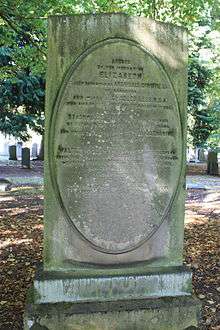Charles Lees (painter)


Charles Lees RSA (1800–1880), was a Scottish portrait painter of note, who also specialized in sporting and recreational subjects.
Life
He was born in 1800 in Cupar, Fife, Scotland.[1] Lees began his career in art under the tutelage of the eminent Edinburgh portraitist Sir Henry Raeburn.[2] He went to Rome for six months, but returned to spend virtually his entire working life in Edinburgh, having his studio at 19 Scotland Street.[3] Lees also taught drawing.[4]
In the 1830s Charles Lees, portrait painter is listed as living at 9 Elder Street in Edinburgh's New Town.[5]
He died in Edinburgh on 20 February 1880 and was buried with his wife Elizabeth Christie of Baberton, and their children, in Warriston Cemetery. The grave stands on the north side of the main east-west path in the upper section.
Portrait painting to sporting and recreational subjects
Charles Lees achieved initial renown as a portrait painter, his accomplishments leading to his election to the Royal Scottish Academy in 1830.[6] He later served as the Academy's Treasurer.[7]
But Lees is perhaps best known for his work specialising in sporting and recreational subjects, particularly golfing and curling, to which he turned from the 1840s.[8]
"The Golfers"
In 1847 Lees completed his depiction of the 1844 grand match at St Andrews in an oil painting, The Golfers, which has been cited as being "the most famous golfing work of art in the world." [9][10] It shows the annual autumn meeting of October 1844, the scene being set at the 'Ginger Beer Hole' on the 'Old Course' at St Andrews. The particular match thus recorded was that between Sir David Baird of Newbyth, Bart., and Sir Ralph Anstruther of Balcaskie, Bart., against Major Hugh Lyon Playfair of St. Andrews and John Campbell, Esq. of Glensaddel. As a portraitist, Lees had painted the true likeness of the actual players and spectators, and a key survives naming them all.[11] The original oil painting is owned by the Scottish National Portrait Gallery. An engraving was made by Charles E. Wagstaffe (born 1808) from which prints were produced.[12]